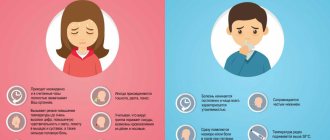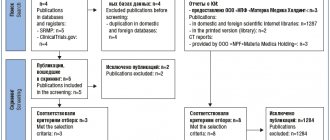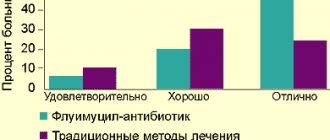Among the 1.5 million living creatures on our planet, almost 50 thousand lead a parasitic lifestyle.
The broad group of parasites includes a large subgroup - viruses that can cause various infectious diseases, including very dangerous ones. And this has always been the case, throughout the entire period of human existence. Devastating smallpox pandemics in China and India are mentioned in written sources from the 10th century BC, and artifacts from Ancient Egypt contain information about a paralytic form of polio caused by viruses. Then pandemics led to the death of millions of people, mowing down cities and countries. Currently, it would seem that this is impossible and any pandemics lead to less significant losses. However, given the power of viruses, it is difficult to make any predictions. The ongoing COVID-19 pandemic has affected all countries of the world, and the fight against it continues. Other viral diseases also occur. Therefore, it is necessary to know as much as possible about viruses and antiviral drugs.
- Classification of antiviral drugs
- The principle of action of antiviral agents
- In what cases is it recommended to take anti-ARVI medications?
- How to take antiviral drugs
- Antiviral drugs for warts
- Prevention of seasonal colds: which drug to use
- Interferon preparations for the prevention of coronavirus
Viruses are the smallest infectious parasitic agents that are distinguished by their non-cellular organization and have a single type of nucleic acid (DNA or RNA). They are capable of self-reproduction based on a genetic code that is universal for all living things. Viruses do not have independent metabolism, and their reproduction is possible only in host cells. And they multiply quite quickly - as a rule, in many cases the first symptoms of the disease (for example, a runny nose during ARVI) can make themselves felt already in the first day or two after infection.
According to one version of scientists, viruses arose even before the appearance of cellular life forms, i.e. much earlier than the appearance of man. Subsequently, they adapted to intracellular parasitism. According to the second version, viral particles are the result of degenerative evolution and come from separated bacterial genes. But whatever the true origin of these microorganisms, the main difficulty is that their life cycle is closely related to the metabolism of the cell. This means that it is extremely difficult to kill the virus without damaging the cell itself.
The development of drugs that are capable of suppressing the virus at all stages of reproduction and without affecting cellular functions poses significant difficulties for pharmacists around the world.i Despite the successes of modern pharmacy and a wide range in pharmacies, for many diseases etiotropic therapy that can affect The viruses themselves are still under development. More often, pathogenetic and symptomatic therapy is used, aimed primarily at relieving symptoms, restoring water and electrolyte balance, and, if necessary, ventilation and other methods.
Classification of antiviral drugs
Over the past decades, the situation with antiviral drugs has improved significantly. Already today, in clinical practice, doctors use a number of antiviral drugs with proven effectiveness. Also around the world, the development of dozens of other compounds continues, which will also be able to fight viruses in the future. Scientists have not given up hope of using new drugs to defeat dangerous viral diseases such as HIV and hepatitis C.
Outstanding achievements in molecular virology have made it possible to create a number of antiviral drugs with high selectivity and optimal pharmacokinetics. These drugs include biological drugs and chemotherapeutic agents—compounds obtained through chemical synthesis.
Preparations of biological origin are represented by antiviral antibodies, immunoglobulins and serums, as well as genetically engineered interferons.
The principle of action of antiviral agents
Antiviral serums and antibodies, when introduced into the body, affect viral proteins, after which the interaction of the virus with cells is blocked. Interferons (IFNs) are cytokines that play a leading role in regulating the main stages of the immune response. Science knows three types of IFN, differing both in structure and mechanism of action.
The first type includes α- and β-interferons, which are responsible for suppressing the proliferation of viruses in cells. Interferons of the second type are represented by γ-interferon, and the third - by several varieties of λ-interferon, which have been little studied to date.
Most IFN-based antiviral drugs include recombinant α- and β-interferons. α-interferons are used to combat viral and oncological diseases, and β-interferons are used to treat autoimmune conditions. Recombinant α-interferon drugs are used to combat dozens of different viruses, including acute respiratory viral infections, Epstein-Barr virus, papillomavirus, cytomegalovirus, herpes infection, measles virus and many other viruses.
Antiviral drugs, including chemotherapy, can influence almost all stages of disease development:
- influence viruses outside the cell;
- block the penetration of viruses inside;
- stop their intracellular reproduction;
- inhibit, i.e. suppress the assembly of viral particles;
- disrupt the release of viral particles from an infected cell;
- stimulate antiviral immunity.
In what cases is it recommended to take anti-ARVI medications?
ARVI, including common colds and flu, is one of the most common “companions” of a person. The main causative agents of acute respiratory viral infections are influenza types A and B, respiratory syncytial virus (RSV), parainfluenza viruses, metapneumoviruses, bocaviruses, seasonal coronaviruses, rhinoviruses and adenoviruses. During the coronavirus pandemic, the incidence of influenza has decreased somewhat in many countries, but it is still common both in the cold and warm seasons. Contrary to the belief of most of us that acute respiratory viral infections occur only in autumn, winter and early spring, the decline in incidence in summer falls by only three to five times.ii
Almost all types of ARVI can lead to the development of dangerous complications, including sinusitis, acute bronchitis, bronchiolitis, tracheitis, sinusitis, frontal sinusitis, pneumonia, meningitis, meningoencephalitis, heart rhythm disturbances, myocarditis and a number of other disorders. In young children, ARVI can lead to the development of false croup - acute stenosis of the larynx, which is extremely dangerous for the child's life and requires immediate medical attention. Therefore, for acute respiratory viral infections, all groups of patients are prescribed etiotropic drug therapy, which blocks the reproduction of viruses in the body. In many cases, pregnancy is not a contraindication to taking antiviral drugs.
Antiviral treatment should be started as early as possible, from the moment the first symptoms appear, preferably in the first day or two of the development of the disease. In many cases, you can do without waiting for laboratory verification of the diagnosis. Pregnant women, the elderly, those who suffer from various chronic diseases, and parents of young children should be especially attentive to their health.
The main advantages of timely administration of antiviral treatment:
- reducing the risk of complications;
- shortening the period of elevated body temperature and a number of unpleasant symptoms.
You can take antiviral drugs even if the patient seeks medical help late with severe forms of the disease or a complicated course of ARVI.
Neuraminidase inhibitors
Neuraminidase, found on the surface of influenza viruses type A and B, is one of the key enzymes involved in their replication. Despite the fact that the genetic structure of influenza viruses and, accordingly, neuraminidase itself is constantly changing, the amino acid sequence of the active site of the enzyme remains constant, which makes it an optimal target for antiviral therapy [1].
Inhibition of neuraminidase disrupts the ability of viruses to penetrate healthy cells, inhibits the release of virions from infected cells and reduces their resistance to the inactivating effect of mucous secretions of the respiratory tract. This stops the further spread of the virus in the body. In addition, neuraminidase inhibitors reduce the production of pro-inflammatory cytokines, thus preventing the development of a local inflammatory response and reducing the manifestations of a viral infection (fever, malaise, etc.) [1].
It is important that the frequency of resistance of influenza A and B viruses to neuraminidase inhibitors is about 2%. Currently, there are two drugs in this group - oseltamivir and zanamivir. The first is intended for oral administration, and the second is used only by inhalation.
The effectiveness of both neuraminidase inhibitors has been proven in large-scale clinical studies. Thus, in patients with a confirmed diagnosis of influenza, while taking oseltamivir, the severity of the disease, which was assessed by the total symptom index, decreased by 38% compared to those who received placebo. The drug reduces the incidence of complications (bronchitis, pneumonia, sinusitis, otitis media) by approximately 50% (in young patients without concomitant diseases) [4]. In accordance with WHO recommendations, the use of oseltamivir is the main method of combating influenza in the event of a pandemic [5].
The preventive activity of oseltamivir has also been confirmed in clinical studies. It has been proven that taking it significantly reduced the frequency of virus shedding and prevented its transmission from one family member to another. Oseltamivir reduces the incidence of influenza in healthy (unvaccinated) adults by 76% (when taken for 42 days - this is the maximum duration of seasonal prophylaxis), and in elderly patients (vaccinated) - by 92% [1].
Zanamivir also alleviates the course of influenza, reduces the number of complications (by 22% compared to placebo), and reduces the frequency of antibiotic use. The percentage of effective protection of zanamivir as a drug for the prevention of disease is 67–79% compared with placebo [4].
Oseltamivir is used to treat and prevent influenza in adults and children over 1 year of age, and zanamivir in adults and children over 5 years of age. Both drugs are available with a doctor's prescription.
Side effects
While taking neuraminidase inhibitors, nausea and vomiting may occur, however, as a rule, these reactions occur in the first two days after the start of treatment and in the vast majority of cases - once.
What should you tell the buyer?
- Neuraminidase inhibitors can be taken with or without food. However, oseltamivir is better tolerated if taken with food.
- Drugs in this group are most active against the influenza virus when taken early: in order to achieve a good therapeutic response, it is important to take them no later than 2 days after the onset of symptoms. Therefore, if the doctor has prescribed them, it is important to start treatment immediately.
- For prevention, it is also important to take oseltamivir no later than 2 days after contact with patients.
How to take antiviral drugs
Are modern pharmaceuticals aware of drugs that can fight viruses and at the same time restore the immune system? Of course, there are such drugs. One of these drugs with a wide spectrum of antiviral activity is the drug VIFERON. Recombinant interferon alpha-2b, which is part of this drug, prevents the synthesis of viral DNA or RNA and blocks the reproduction of the virus, helps restore the immune system, and also has antiproliferative properties. It is identical to human interferon alpha-2b and is produced using modern technology.
The drug, which is available in the form of suppositories, gel and ointment, was developed as a result of fundamental research in the field of immunology, which has proven that in the presence of antioxidants (vitamins C, E), the antiviral effect of interferon is enhanced.
The recommended dose for adults, including pregnant women and children over 7 years old is VIFERON Suppositories 500,000 IU, 1 suppository 2 times a day after 12 hours every day for 5 days. According to clinical indications, therapy can be continued.
Children under 7 years old, incl. newborns and premature infants with a gestational age of more than 34 weeks are prescribed VIFERON 150,000 IU, 1 suppository 2 times a day after 12 hours every day for 5 days. According to clinical indications, therapy can be continued.
Premature newborns with a gestational age of less than 34 weeks are prescribed VIFERON 150,000 IU, 1 suppository 3 times a day after 8 hours every day for 5 days. According to clinical indications, therapy can be continued.
M2 channel blockers
Both representatives of this class - rimantadine and amantadine - are adamantane derivatives. Today, only the first is used as an antiviral drug. Rimantadine, first synthesized in 1963, is indicated for the early treatment and prevention of influenza caused by influenza A virus in adults and children over 7 years of age. Its mechanism of action is based on blocking special M2 ion channels of the virus, which leads to disruption of its ability to penetrate cells and release ribonucleoprotein. This inhibits the most important stage of viral replication—the release of the viral genome in the cell [1].
It is important that during the use of M2 channel blockers, resistance may develop. Its frequency by the 5th day of treatment can reach 30% [1]. Thus, it is known that all 100% of the H3N2 influenza strains, as well as the swine flu pathogens that caused the epidemic in 2009, were resistant to this drug [2]. Due to the resistance of pathogens to rimantadine, the advisability of its use in recent years has raised more and more questions among specialists.
Side effects
Rimantadine cannot be said to have a favorable safety profile. It causes a number of undesirable reactions from the gastrointestinal tract and nervous system. According to the findings of the Cochrane Collaboration study, which examined the activity and safety of amantadine and rimantadine, drugs in this group should be used only in emergency situations when other drugs do not show a therapeutic effect [3].
What should I remind the buyer about?
When dispensing rimantadine, the buyer should pay attention to possible drug interactions. It is known that when rimantadine is used together with drugs that are very often used to treat influenza and ARVI - paracetamol and ascorbic acid - the absorption of the antiviral drug is reduced by approximately 11% [4].
In addition, it is appropriate to remind the consumer that if changes in health occur, in particular, tachycardia, insomnia, unusual headache, shortness of breath, nausea, vomiting and other side effects, they should be reported to the doctor immediately [4].
Be careful - depending on the brand name, rimantadine medications are available with or without a prescription.
Antiviral drugs for warts
Warts, papillomas and condylomas are caused by the human papillomavirus (HPV). Once on the skin or mucous membranes through household or sexual contact, this virus infects the basal cells of the epithelium by penetrating into them through microtrauma. HPV of high oncogenic risk can lead to the development of cervical cancer, and HPV of low oncogenic risk causes the following types of warts:
- vulgar warts - hard growths larger than 1 mm;
- plantar formations, which are located on the skin of the foot;
- flat warts are small nodules that are located on the face, hands and other parts of the body;
- thread-like neoplasms that form in the eyes, neck and armpits.
In world practice, when treating manifestations of the human papillomavirus, doctors recommend the use of drugs with antiviral and immunomodulatory effects. The effectiveness of therapy increases significantly if the patient sequentially or in parallel also uses methods of destruction: surgical excision, drug, laser and radio wave removal, as well as cryodestruction or electrocoagulation.
Since HPV infection and the appearance of warts on the skin and mucous membranes may indicate an unsatisfactory state of the immune system, treatment may include drugs that not only fight viral particles, but also help restore immunity. One of these antiviral drugs is VIFERON.
Prevention of seasonal colds: which drug to use
VIFERON Gel is used for the prevention and treatment of acute respiratory viral infections and in the complex therapy of influenza, frequent and long-term acute respiratory viral infections, including those complicated by bacterial infection. During the cold season, for prevention, adults and children from the first days of life need to apply a strip of gel approximately 0.5 cm long to the nasal mucosa 2 times a day. Course duration is 2-4 weeks.
With external and local use of the drug, systemic absorption (the physiological process of absorption, that is, the penetration of medicinal substances into the blood and lymph) is low and the drug has an effect only at the site of the lesion.
Of course, in addition to the use of antiviral drugs in the autumn-winter period, it is necessary to eat well, drink enough water, wash your hands more often, do regular wet cleaning in the room and maintain a normal temperature in it, observe the work and rest schedule, and also, if possible, avoid crowded places.
The clinical manifestations of influenza and other acute respiratory viral infections are extremely similar; in almost 30% of the same patient, especially in the autumn-winter period, there is a mixed infection caused by various pathogens, so preference should be given to drugs that are effective regardless of the specific pathogen. Every doctor is faced with the problem of choosing a drug to treat a patient with ARVI and influenza.
Criteria for choosing an antiviral drug for influenza and ARVI:
- universality of action;
- possible combination of antiviral and immunomodulatory effects;
- no toxicity;
- minimum side effects;
- lack of viral resistance to the drug;
- oral administration (outpatient);
- affordability.
Currently, antiviral drugs of several groups are recommended for the treatment and prevention of influenza and other acute respiratory viral infections, including:
- neuraminidase inhibitors (oseltamivir, zanamivir, etc.);
- interferons (Alfaron, Grippferon, Ingaron, Viferon, etc.);
- interferon inducers (Cycloferon, Tiloron, Kagocel, etc.);
- umifenovir (Arbidol);
- Ingavirin;
- Anaferon, Ergoferon.
The ion channel blocker (Rimantadine, Algirem) that was used until recently for the treatment and prevention of influenza A should not be prescribed, since the vast majority of currently circulating strains of influenza viruses are resistant to it, and it does not act at all on pathogens of other acute respiratory viral infections.
Neuraminidase inhibitors - oseltamivir (Tamiflu) and zanamivir (Relenza) are effective for the treatment of influenza (including pandemic) when prescribed no later than 24-48 hours from the onset of clinical symptoms of the disease (as practitioners are well aware, most patients seek medical help only for the second or third day from the onset of the disease), but should not be used for the treatment of other acute respiratory viral infections, since they have a selective effect exclusively on neuraminidase of the influenza virus
Prescribing Tamiflu for the prevention of influenza is not recommended in order to avoid the spread of influenza virus strains resistant to this drug, especially since they have already appeared. There are recommendations to use oseltamivir in combination with other antiviral drugs, interferon inducers, which will prevent a further increase in resistance and increase the effectiveness of treatment.
Regarding zanamivir, it should be noted that the drug is not suitable for widespread use in clinical practice, since it can only be used in the form of inhalations, which is unacceptable for preschool children and elderly patients. In addition, a number of adverse reactions are possible, including bronchospasm and laryngeal edema.
Neuraminidase inhibitors are not produced in the Russian Federation and are expensive. An alternative to them for the treatment of not only influenza, but also other acute respiratory viral infections are highly effective domestic drugs, in particular interferons (IFNs) and their inducers.
As is known, the production of IFN is the first line of cell defense against viral infection, significantly ahead of the synthesis of specific antibodies and other immune factors. Unlike antibodies, IFNs inhibit the intracellular stages of viral reproduction in infected cells and provide immunity to viruses in surrounding healthy cells. Getting from the gates of infection into the blood, IFNs are distributed throughout the body, preventing subsequent dissemination of viruses.
Antiviral properties are most characteristic of IFN-α and IFN-β, and IFN-γ has predominantly immunoregulatory and antiproliferative effects.
The relationship between the IFN system and influenza viruses has been studied in most detail. It has been established that the NS1 protein of the virus inhibits the production of IFN by infected cells, which contributes to the rapid progression of the infection. It is also known to suppress the protective effect of IFN during respiratory syncytial infection and some other acute respiratory viral infections. These facts served as the basis for the use of IFN drugs in the treatment and prevention of influenza and ARVI, and subsequently for the use of interferon inducers for this purpose.
In our country, domestic recombinant IFNs have found widespread use for the treatment and prevention of acute respiratory viral infections, including influenza: Alfaron, Grippferon, Ingaron (the listed drugs are used in the form of nasal drops), as well as Viferon (gel, ointment, suppositories), etc.
A new generation of drugs includes interferon inducers (IIs), which have not only broad antiviral properties, but also an immunomodulatory effect.
Interferon inducers have a number of advantages over IFNs themselves: they are slightly allergenic, do not lead to the formation of antibodies to IFN, and stimulate the body’s prolonged production of its own interferon, sufficient to achieve therapeutic and preventive effects. In addition, AIs combine well with antibiotics, immunomodulators, antiviral and symptomatic agents used in the complex treatment of influenza and other acute respiratory viral infections. Viral resistance does not develop to interferon inducers.
All the most well-known AIs (Tiloron, Cycloferon, Kagocel, Neovir, etc.) were developed by domestic scientists. The effectiveness of AI in the treatment and prevention of influenza and other acute respiratory viral infections, regardless of the specific etiological agent, has been convincingly established using the example of Kagocel, the latest generation drug among AI inducers.
Multicenter randomized, blind, placebo-controlled clinical studies of the effectiveness and safety of the drug Kagocel in adults for the treatment of influenza and other acute respiratory viral infections, as well as for their prevention, were conducted at the clinical sites of the country's leading research institutes: Influenza Research Institute of the Russian Academy of Medical Sciences (St. Petersburg), Scientific Research Institute Virology named after. D.I. Ivanovsky RAMS (Moscow) and the Military Medical Academy named after. S. M. Kirova (St. Petersburg) in 2000–2003.
Analysis of the results of the research allowed us to formulate the following provisions.
Kagocel, when used within 96 hours from the onset of the disease, has a pronounced therapeutic effect in uncomplicated influenza caused by viruses A (H1N1), A (H3N2) and B, as well as in influenza complicated by bacterial tonsillitis, and other acute respiratory viral infections (parainfluenza, adenoviral disease), which manifests itself in a reduction in the febrile period, shortening and mitigation of symptoms of intoxication in almost 90% of patients. According to clinical and laboratory data (clinical blood and urine analysis, biochemical blood test) data, Kagocel does not cause adverse or toxic reactions, and does not have an immunosuppressive effect on indicators of humoral and cellular immunity.
All this made it possible to recommend Kagocel as an antiviral drug for influenza and other acute respiratory viral infections in adults, as well as to use it in complex treatment for secondary bacterial complications that have developed against the background of a viral infection [18–20]. For the treatment of patients with influenza and other acute respiratory viral infections, including those complicated by a bacterial infection, the following regimen for using Kagocel is recommended for adults: 2 tablets 3 times a day for the first 2 days, in the next 2 days - 1 tablet 3 times a day
Subsequently, Kagocel was successfully used and is currently used for the treatment of patients with various acute respiratory viral infections, including influenza, both in outpatient clinical practice and in hospitals.
For everyday clinical practice, it is significant that, unlike other antiviral drugs, Kagocel is effective even when used relatively late - up to the 4th day from the onset of the disease.
In 2015, the interim results of a non-interventional observational study were presented, in which for the first time, in outpatient practice, the treatment of ARVI and influenza of a large number of adult patients (14,431) from 202 medical centers in several countries (Russia, Armenia, Moldova, Georgia) was analyzed. The effectiveness of the drug Kagocel has been shown in dynamics, regardless of the time of administration of therapy, including in elderly people.
As is known, the incidence of ARVI and influenza in children is 3–4 times higher than that in adults. In this regard, the proven effectiveness and safety of using Kagocel in children over three years of age is of particular importance. Noting the effectiveness of Kagocel compared to placebo for ARVI in children, regardless of the etiology of the disease and the presence of complications, the researchers emphasize the absence of side effects and the good tolerability of the drug. Their recommendation for the use of Kagocel in pediatric practice for the treatment of influenza and ARVI in children from 3 years of age was justified. Thus, a new domestic drug, the interferon inducer Kagocel, is a highly effective remedy for the treatment and prevention of acute respiratory viral infections and influenza caused by various types and strains of the virus, including pandemic ones. For preventive purposes, it is advisable to prescribe Kagocel scheduledly during the seasonal rise in the incidence of influenza and ARVI, as well as urgently, immediately after contact with patients.
The antiviral drug Kagocel is included in the standards of the Ministry of Health of the Russian Federation for the treatment of moderate and severe forms of influenza in adults, as well as in the list of vital and essential drugs in Russia and the federal reserve stock.
Kagocel as an antiviral drug, along with umifenovir (better known as Arbidol) and pentanedioic acid imidazolethanomide (known to practitioners as Ingavirin), is indicated in the latest recommendations for the diagnosis and treatment of influenza in adult patients.
Less known to practitioners is the new, also domestic drug Ergoferon, with a combined mechanism of action: antiviral, anti-inflammatory and antihistamine.
The triple effect of Ergoferon is ensured by its constituent affinity-purified antibodies to IFN-γ, CD4 lymphocytes and histamine.
The antiviral effect of Ergoferon is carried out primarily by increasing the production of IFN-α and γ; anti-inflammatory - due to the regulation of the infectious-inflammatory process, reducing swelling and hyperemia; antihistamine - due to the effect on peripheral and central H1 receptors. The effect of Ergoferon on α- and γ-IFN, in combination with the activation of virus recognition by the CD4 system, provides a powerful antiviral effect comparable to oseltamivir. The active ingredients of Ergoferon are presented in ultra-low doses, which ensures good tolerability and high safety indicators of the drug.
In an in vitro experimental model caused by respiratory syncytial virus, rhinovirus, as well as bronchial asthma complicated by rhinovirus infection, the antiviral activity of Ergoferon was established. In 2011–2012 A multicenter, double-blind, placebo-controlled, randomized clinical trial of the effectiveness and safety of Ergoferon in the treatment of influenza and ARVI in adult patients was conducted. Ergoferon was prescribed according to the following scheme: on the first day of treatment, 8 tablets (in the first 2 hours, 1 tablet every 30 minutes, then 3 more times, 1 tablet at regular intervals), from the second to the fifth day, the drug was used 1 tablet 3 times a day. day.
Rapid relief of fever, intoxication, and catarrhal symptoms of influenza and acute respiratory viral infections has been established, with maximum effectiveness noted with early initiation of therapy (in the first 24 hours from the onset of the disease). It is significant that Ergoferon practically reduces the need to prescribe antipyretics, starting from the first day of therapy. At the same time, Ergoferon, even with late treatment, helps prevent bacterial complications that require antibiotics.
The drug Ergoferon has a high safety profile combined with good tolerability.
Pulmonologists, therapists, and infectious disease specialists are well aware that acute respiratory viral infections are the most common cause of exacerbation of chronic lung diseases. Despite the fact that 90–95% of upper respiratory tract infections are caused by viruses, in 75% of cases of acute respiratory viral infection treatment in outpatient settings, antibiotics are unjustifiably prescribed. Meanwhile, in accordance with modern standards of treatment of respiratory viral infections, a patient suffering from chronic respiratory pathology should be prescribed etiotropic therapy with antiviral drugs from the first hours of the disease. In addition, in this category of patients, taking into account the severity of the background pathology, it is necessary to begin anti-inflammatory treatment at an early stage.
The clinical effectiveness of Ergoferon in the treatment of ARVI in patients with chronic obstructive pulmonary disease and asthma was studied in a comparative randomized clinical trial in parallel groups, conducted at the allergy department of the 57th City Clinical Hospital of Moscow in November 2011 - March 2012. The study included 66 hospitalized patients suffering from chronic obstructive pulmonary diseases, aged from 19 to 75 years (average age 43.2 ± 8.2 years) with ARVI symptoms (fever, signs of intoxication and catarrhal syndromes). The study showed that in patients using Ergoferon for the treatment of ARVI, the relief of the main catarrhal and general intoxication manifestations of ARVI occurred much faster than in those who did not take this drug, and there was no need to prescribe antibiotics. There were no allergic reactions or other side effects when taking Ergoferon, which is important for patients of this profile. In the conclusions from the study, the author emphasizes the good tolerability and high effectiveness of Ergoferon in allergy patients, which makes its use a promising direction in the treatment of ARVI in the clinic of respiratory diseases.
Ergoferon has virtually no contraindications and is combined with all symptomatic and antibacterial drugs that are used in the treatment of influenza and ARVI. The effect of treatment occurs quickly, and the complex action of Ergoferon corresponds to modern principles of therapy for influenza and other acute respiratory viral infections.
Another interesting study was conducted that demonstrated the effectiveness of Ergoferon in the complex treatment of community-acquired pneumonia as a complication of ARVI.
It is worth saying a few words about studying the effectiveness and safety of Ergoferon in elderly and old patients. In 2013, the results of a clinical study of the effectiveness and safety of Ergoferon for the treatment of ARVI in patients aged 60 to 83 years were published, demonstrating the feasibility of prescribing Ergoferon to patients in these age groups. Thus, the new domestic original drug Ergoferon is indicated for the treatment of influenza and acute respiratory viral infections in patients of various ages, including those with chronic respiratory diseases and a history of severe allergies.
So, in the upcoming epidemic season of 2015–2016, characterized by the social circulation of various types and subtypes of influenza virus, the emergence of new pathogens of acute respiratory viral infections, domestic healthcare has the vaccines and antiviral drugs necessary for prevention and treatment.








